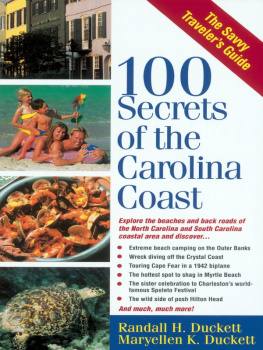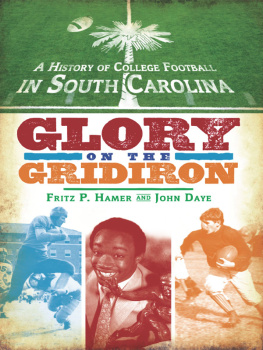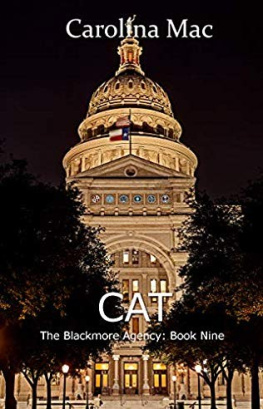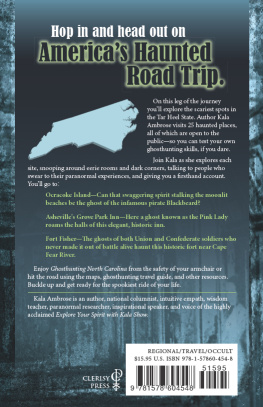East Carolina University - East Carolina University
Here you can read online East Carolina University - East Carolina University full text of the book (entire story) in english for free. Download pdf and epub, get meaning, cover and reviews about this ebook. City: Charleston;South Carolina, year: 2013;2014, publisher: Arcadia Publishing, genre: Detective and thriller. Description of the work, (preface) as well as reviews are available. Best literature library LitArk.com created for fans of good reading and offers a wide selection of genres:
Romance novel
Science fiction
Adventure
Detective
Science
History
Home and family
Prose
Art
Politics
Computer
Non-fiction
Religion
Business
Children
Humor
Choose a favorite category and find really read worthwhile books. Enjoy immersion in the world of imagination, feel the emotions of the characters or learn something new for yourself, make an fascinating discovery.

- Book:East Carolina University
- Author:
- Publisher:Arcadia Publishing
- Genre:
- Year:2013;2014
- City:Charleston;South Carolina
- Rating:5 / 5
- Favourites:Add to favourites
- Your mark:
- 100
- 1
- 2
- 3
- 4
- 5
East Carolina University: summary, description and annotation
We offer to read an annotation, description, summary or preface (depends on what the author of the book "East Carolina University" wrote himself). If you haven't found the necessary information about the book — write in the comments, we will try to find it.
East Carolina University — read online for free the complete book (whole text) full work
Below is the text of the book, divided by pages. System saving the place of the last page read, allows you to conveniently read the book "East Carolina University" online for free, without having to search again every time where you left off. Put a bookmark, and you can go to the page where you finished reading at any time.
Font size:
Interval:
Bookmark:
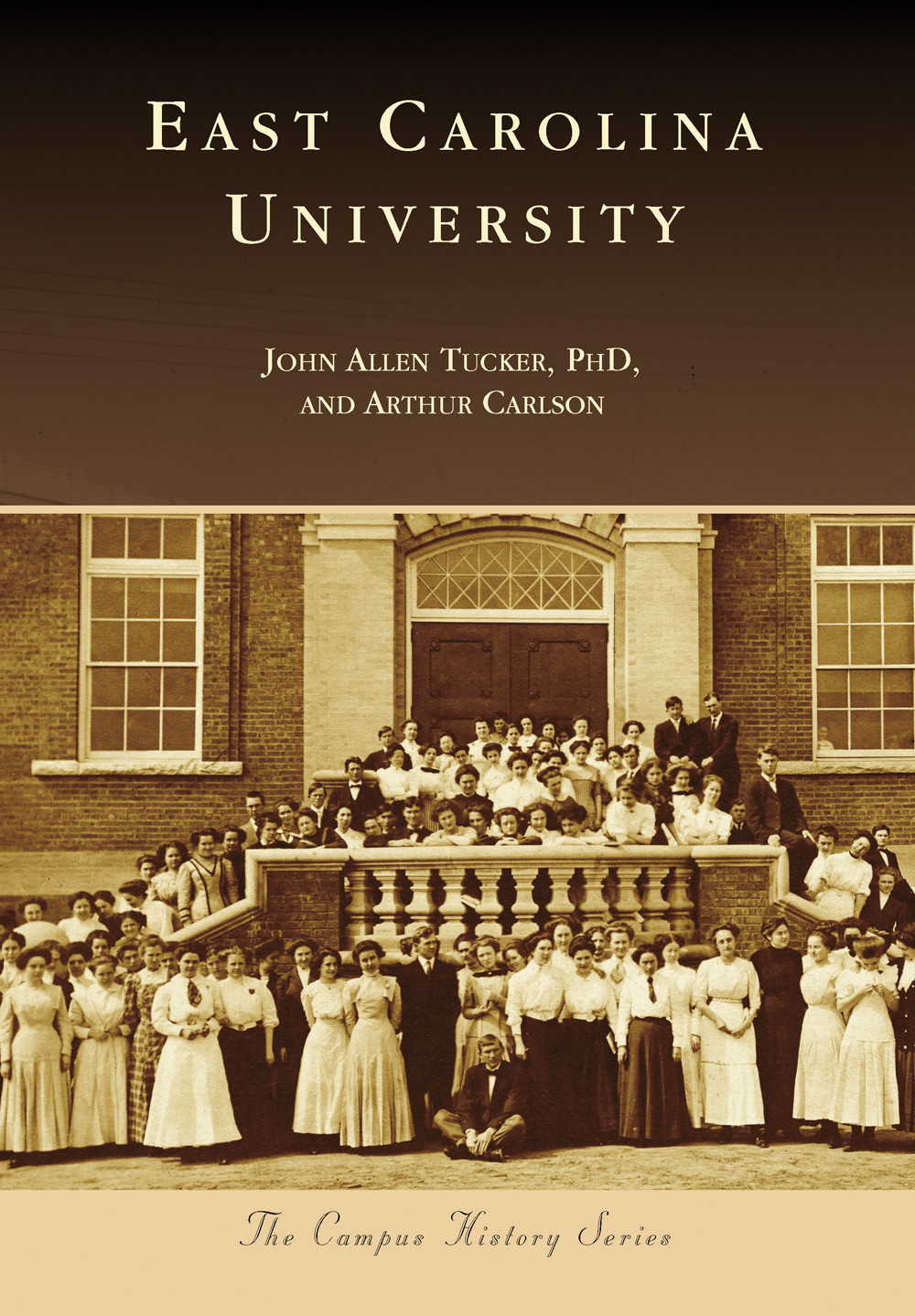
The Campus History Series
EAST CAROLINA
UNIVERSITY

This depiction of the campus, dating to around 1909, shows the original six buildings plus two that were not added for decadesa library at the west end and a gymnasium at the east. This depiction was featured in every catalog East Carolina Teachers Training School (ECTTS) published and in the first volume of the Training School Quarterly, published in 1914. Gov. Thomas Jordan Jarvis, founding father of the school and a graduate of Randolph-Macon College, provided for a handsome and impressive campus that was somewhat reminiscent of his alma mater. (Courtesy of the East Carolina University Archives.)
ON THE COVER: Pictured here are the first students at ECTTS (104 females and 19 males) with the 11 founding faculty (seven females, four males), in front of the Administration Building (later, Austin Building). President Wright, wearing a bow tie, is standing on the landing, left of the entrance. This photograph, donated to the university archives in 1984 by William R. Wrightyoungest son of Robert H. Wright, the schools first presidentdates from the fall of 1909, shortly after ECTTS opened. (Courtesy of the East Carolina University Archives.)
The Campus History Series
EAST CAROLINA
UNIVERSITY
JOHN ALLEN TUCKER, PHD, AND ARTHUR L. CARLSON

Copyright 2013 by John Allen Tucker, PhD, and Arthur L. Carlson
ISBN 978-1-4671-2040-1
Ebook ISBN 99781439644119
Published by Arcadia Publishing
Charleston, South Carolina
Library of Congress Catalog Card Number: 2013935196
For all general information, please contact Arcadia Publishing:
Telephone 843-853-2070
Fax 843-853-0044
E-mail
For customer service and orders:
Toll-Free 1-888-313-2665
Visit us on the Internet at www.arcadiapublishing.com
Dedicated to Kate Tucker, Kaleigh Tucker, and Hayley Carlson
CONTENTS
ACKNOWLEDGMENTS
Books such as this pictorial history of East Carolina University (ECU) are inevitably the work of many contributors, supporters, and staff. First and foremost, however, we must thank the founders, faculty, and students of East Carolina for their energetic efforts in making the story that we have the honor and pleasure of presenting in pictures. Without their many achievements, the story would merit neither celebration nor representation here.
Our sincere thanks also to Katie McAlpin, editor at Arcadia Publishing. Katie was instrumental in proposing the project and then seeing it through to publication in a timely and excellent manner. Her guidance throughout the process is much appreciated.
Many supporters at East Carolina deserve our sincere thanks as well for their financial and moral backing. Chancellor Steve Ballard and provost Marilyn Sheerer, in seeing the wisdom of having a university historian and university archives even after the centennial celebration had concluded, merit our sincere appreciation. Dr. Alan White, dean of Thomas Harriot College of Arts and Sciences, deserves our praise for his generous support of the publication, as does Jan Lewis, interim dean of J.Y. Joyner Library. Ron Mitchelson, interim vice chancellor for research and graduate studies, and Gerry Prokopowicz, history department chair, equally deserve our thanks for their support.
This book would not have been possible without the support of the East Carolina University Archives and Digital Collections. With only a handful of exceptions, the images presented here came from the university archives and were professionally digitized for publication by the digital collections staff. Matt Reynolds and Kacy Guill deserve our praise for coordinating these efforts. Our thanks also to Roger Kammerer and Candace Pierce for their permission to use images from their collections. Also, thanks go to the North Carolina Postcard Collection at the University of North Carolina at Chapel Hill (UNC Postcard Collection) for its permission to use several postcard images in this volume. These images, as well as the Kammerer-Pierce ones, are noted in the text. Otherwise, all images are from the East Carolina University Archives.
INTRODUCTION
The founding father of East Carolina Teachers Training School, former governor Thomas Jordan Jarvis (18361915), fully grasped the significance of the institutions beginning when he observed, This school comes nearer to being the peoples school than any other in the state... [It provides] the greatest service to the greatest number of people... We can never begin to calculate the value it will be to North Carolina.
Having retired from an exceptional career in political office, Governor Jarvis spent his final decades in his adopted home, Greenville, playing a leading role in transforming the small but thriving tobacco town on the Tar River into a progressive center of educational distinction. Working with state senator James L. Fleming (also a Greenville resident), Jarvis contributed his priceless political connections throughout the state to the cause of having legislation enacted to provide for the school and to have it located in Greenville. Jarvis also played the leading role in selecting the architectural style of the campusSpanish Colonialreflecting his service as minister to Brazil. Finally, Jarvis presided over the selection of the first president of the training school, Robert Herring Wright (18701934), and a number of the charter faculty. When the school opened in the fall of 1909 to a class of 123 students (104 women, 19 men), there was no doubt that the eastern part of the state had entered a new and profoundly promising age.
Led for more than two decades by Wright, a native North Carolinian devoted to excellence and progressive approaches to education, the training school rapidly filled a variety of needs with year-round instruction of both aspiring and in-service teachers. The result was a degree of cultural and educational enrichment for eastern North Carolina that continues even as the school advances into its second century.
Belief in the progressive power of education vis--vis the problems challenging humanity was integral to the service ethic prevailing at the institution. Confident elation over the new experiment is evident in virtually all that the school and its students did, including hosting lectures, staging dramatic performances like The Mikado and Hiawatha, founding literary societies, gardening, attending chapel talks, hiking, participating in social activities sponsored by county clubs, and myriad other activities that complemented classroom learning. So many of East Carolinas later strengthsespecially in drama, music, science, the humanities, and the social scienceshave clear beginnings in the multifaceted work of the training school. Documentation for these many contributions appears in the Training School Quarterly (TSQ), a set of well-edited volumes relating the theories and practices of the first decade of the school. Fortunately, the TSQ took advantage of newly developed cameras and provided considerable primary source material in the form of photographs.
A truly revolutionary aspect of the training school was its coeducational nature. In the early 20th century, most institutions of higher education in North Carolina were not coeducational and would not be so for decades to come. The University of North Carolina at Chapel Hill, for example, did not fully provide for coeducation in all of its academic programs until 1963. Rather than coeducation, the norm was a separate but equal division wherein women went to schools such as Womans College (later, University of North Carolina at Greensboro). East Carolina, then, was a leader in that its doors were open from the start, in theory and practice, to both men and women.
Next pageFont size:
Interval:
Bookmark:
Similar books «East Carolina University»
Look at similar books to East Carolina University. We have selected literature similar in name and meaning in the hope of providing readers with more options to find new, interesting, not yet read works.
Discussion, reviews of the book East Carolina University and just readers' own opinions. Leave your comments, write what you think about the work, its meaning or the main characters. Specify what exactly you liked and what you didn't like, and why you think so.

